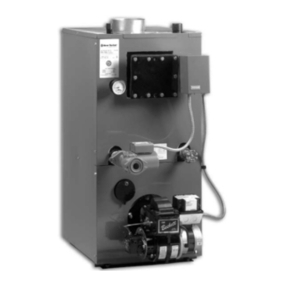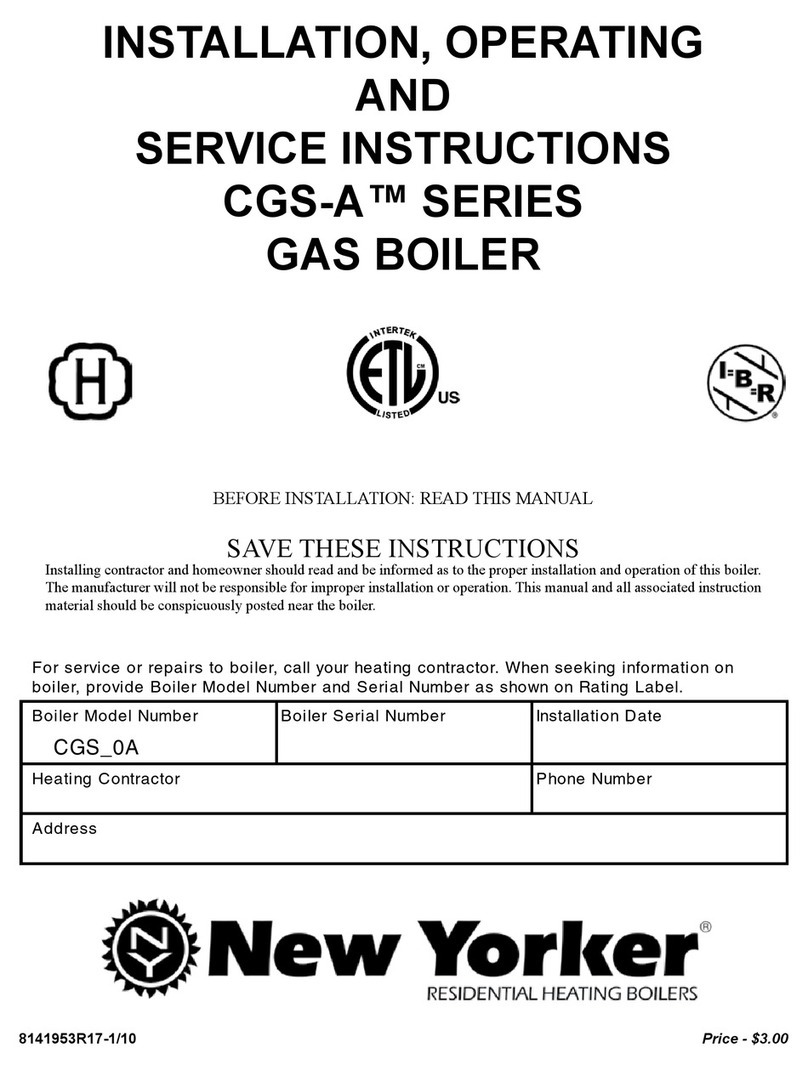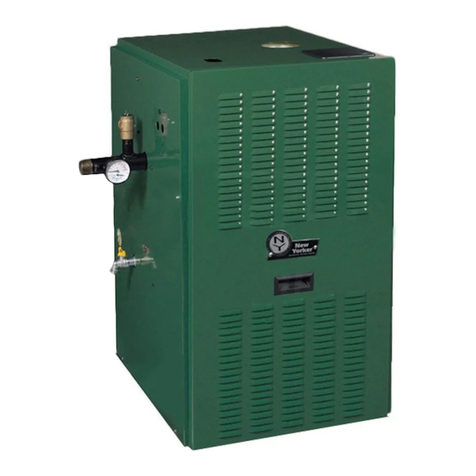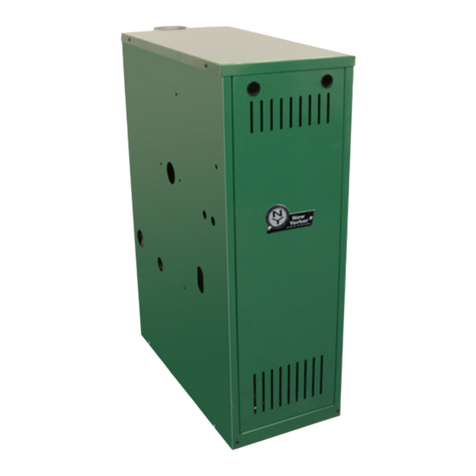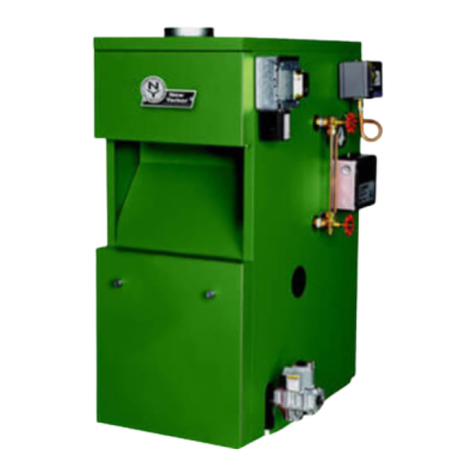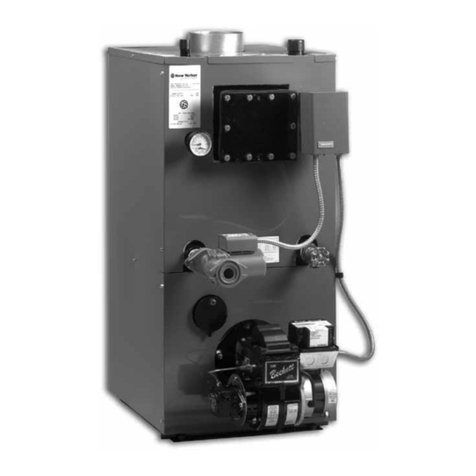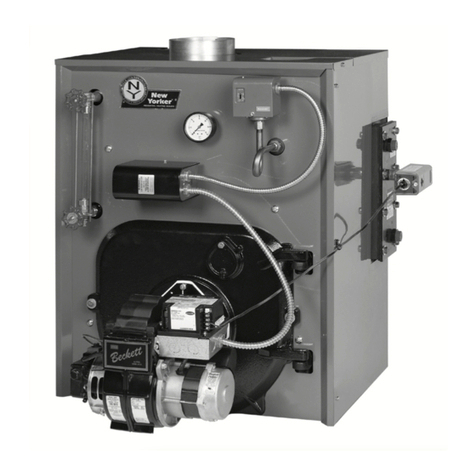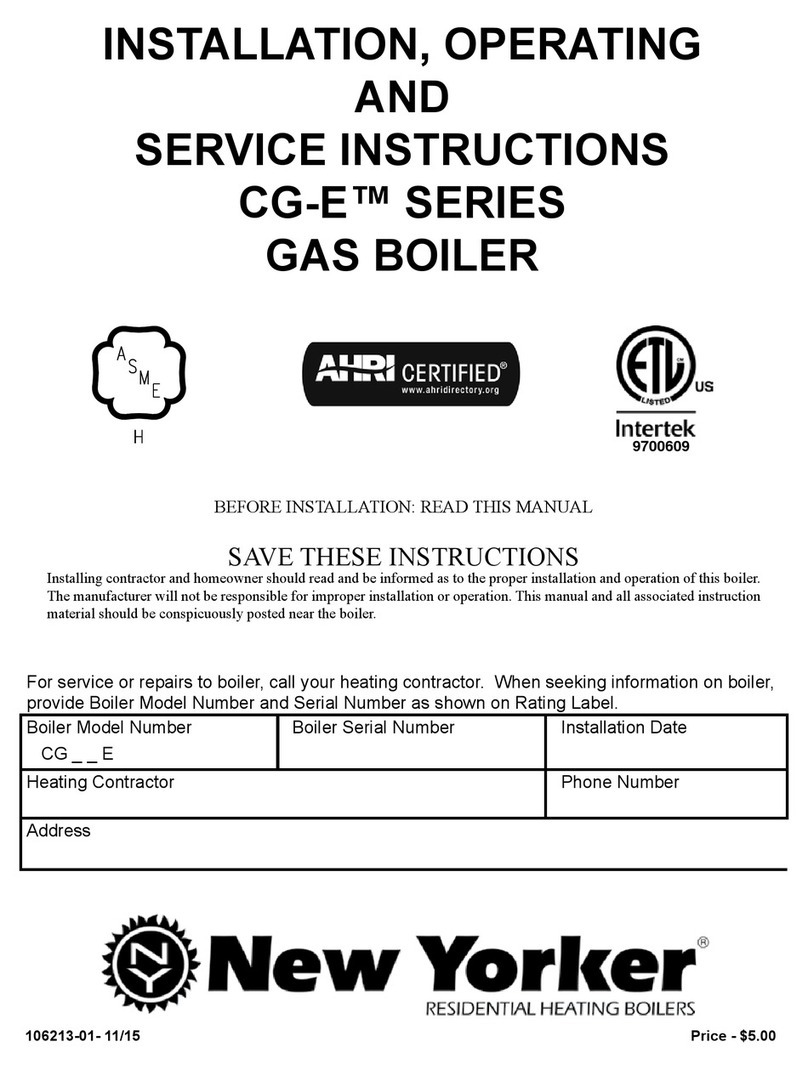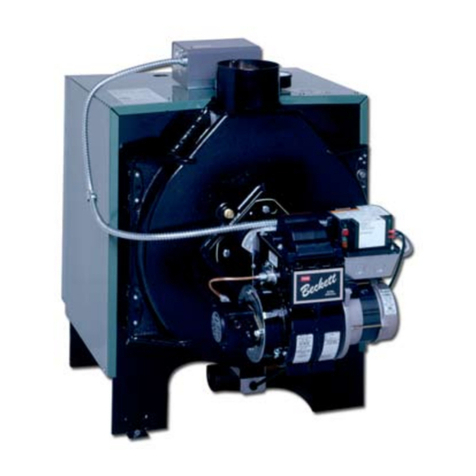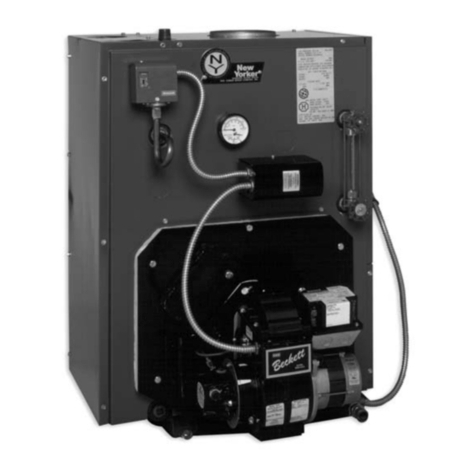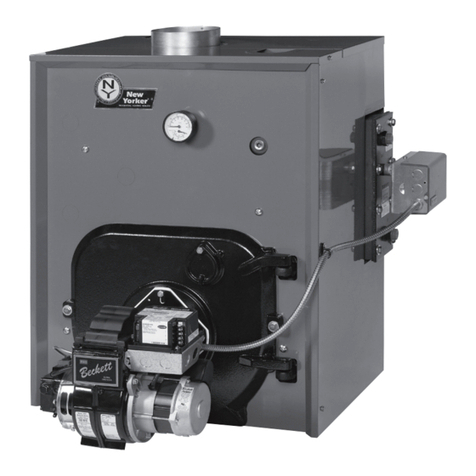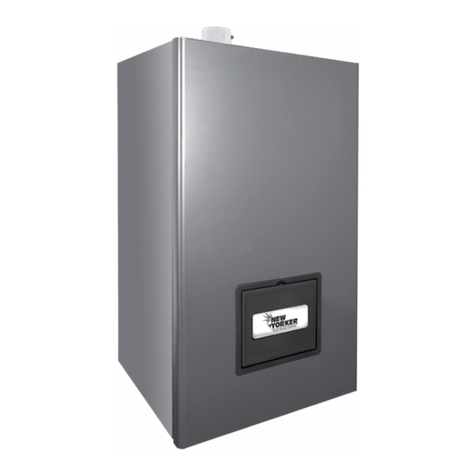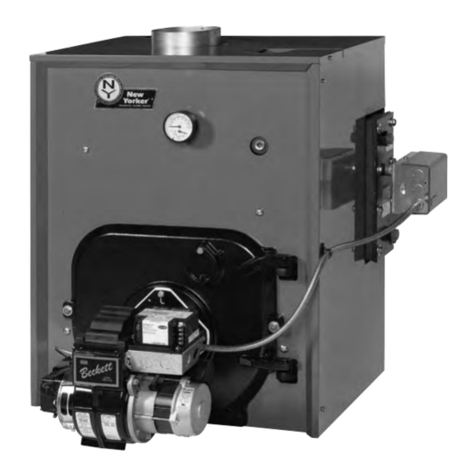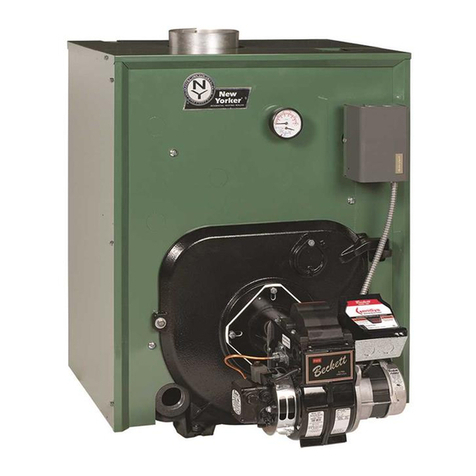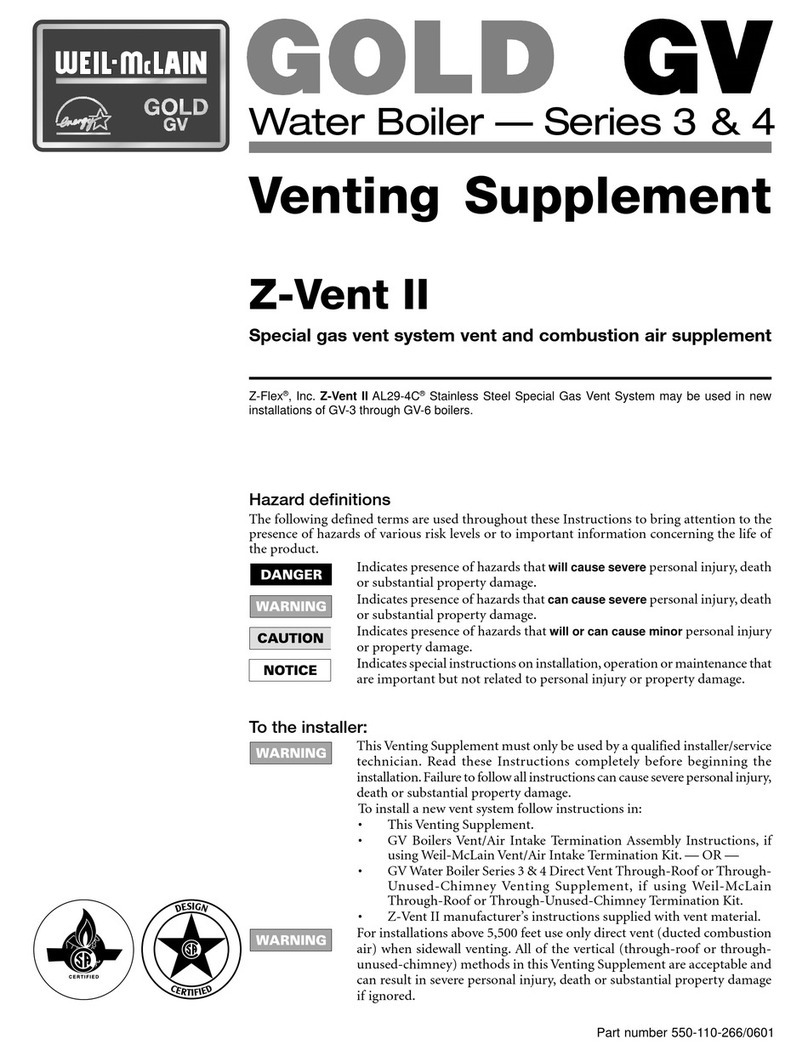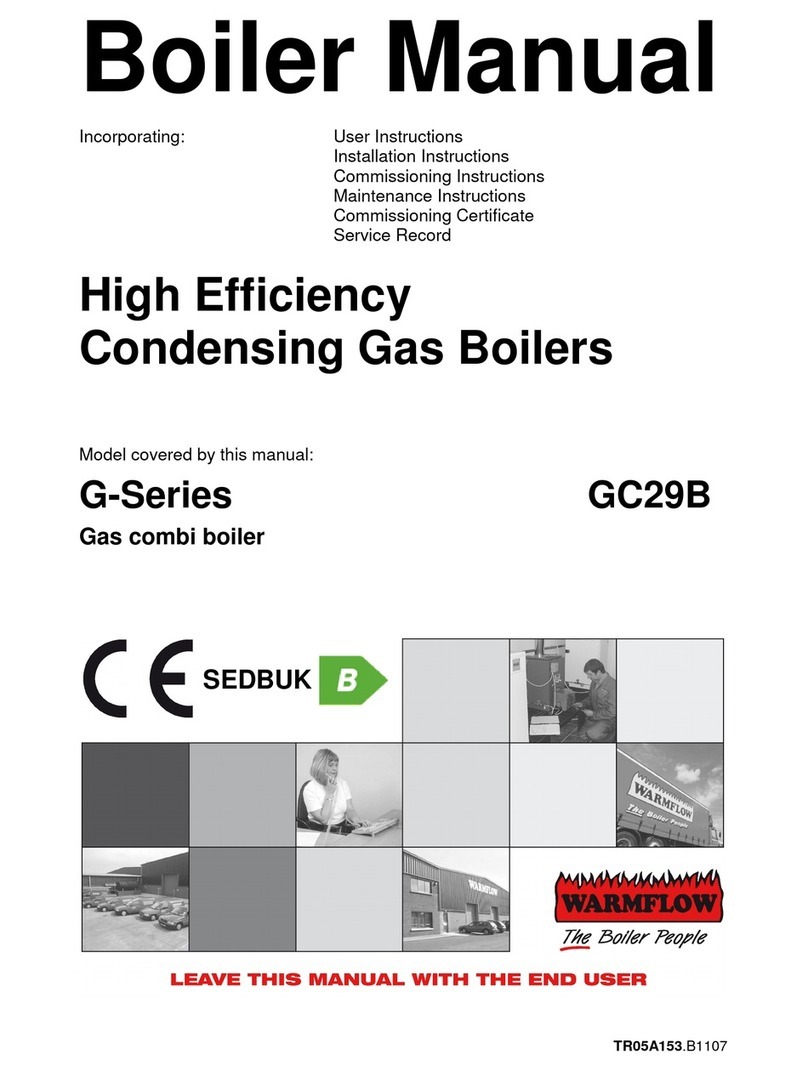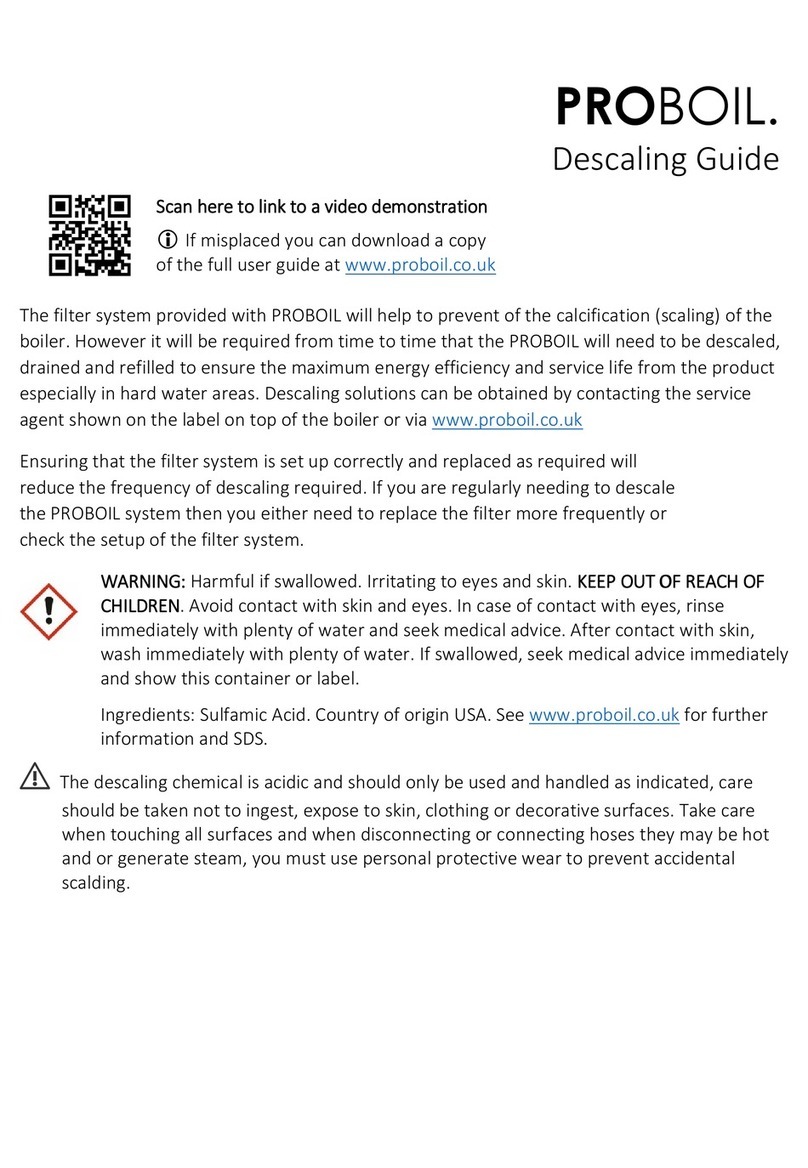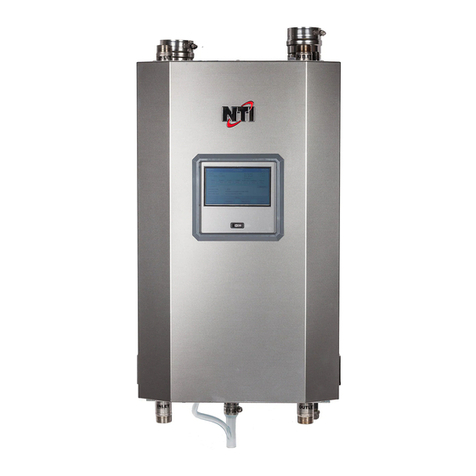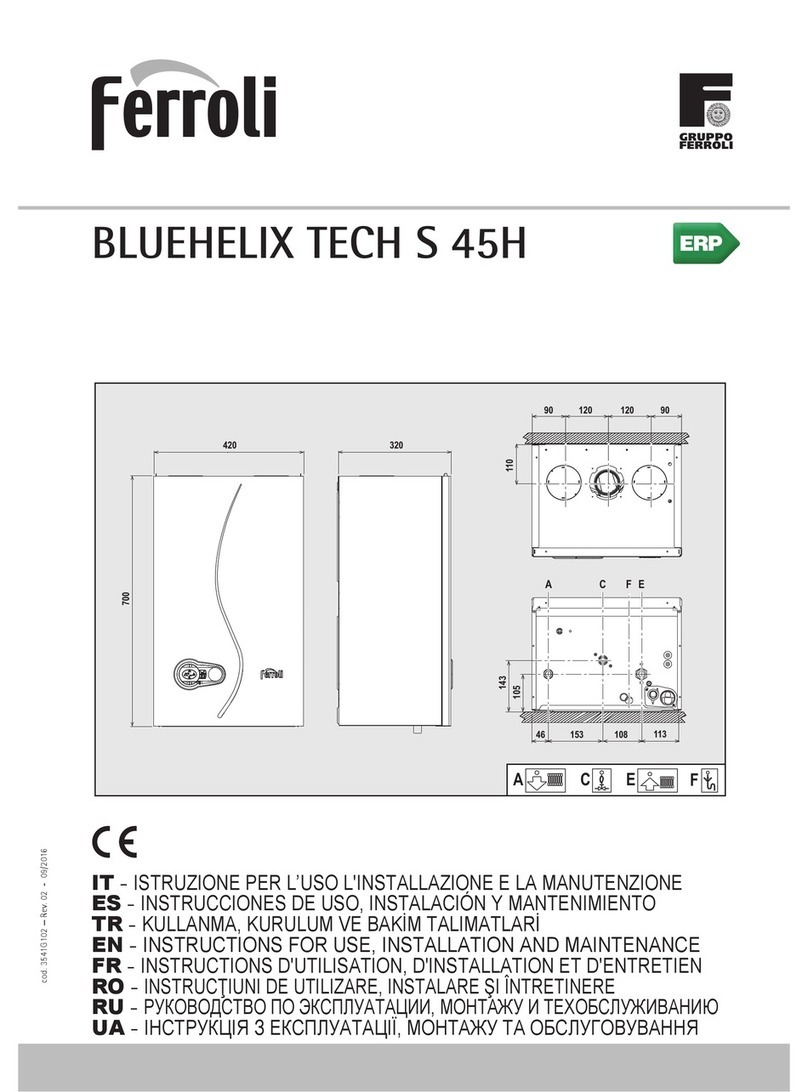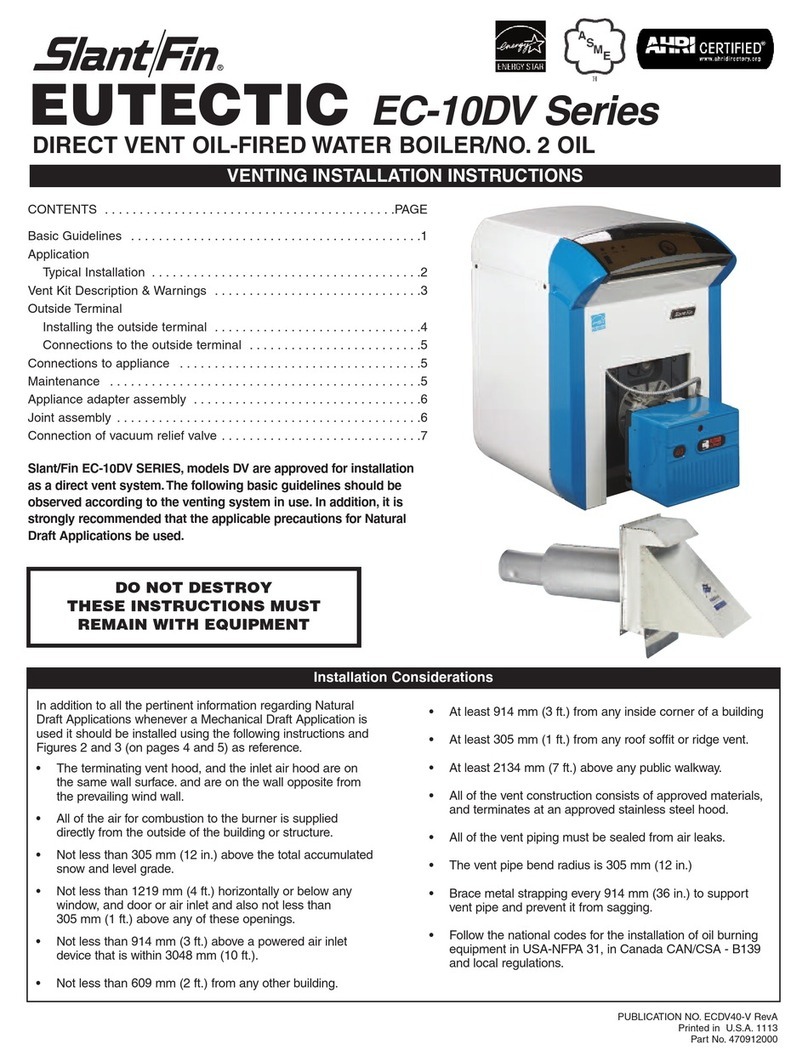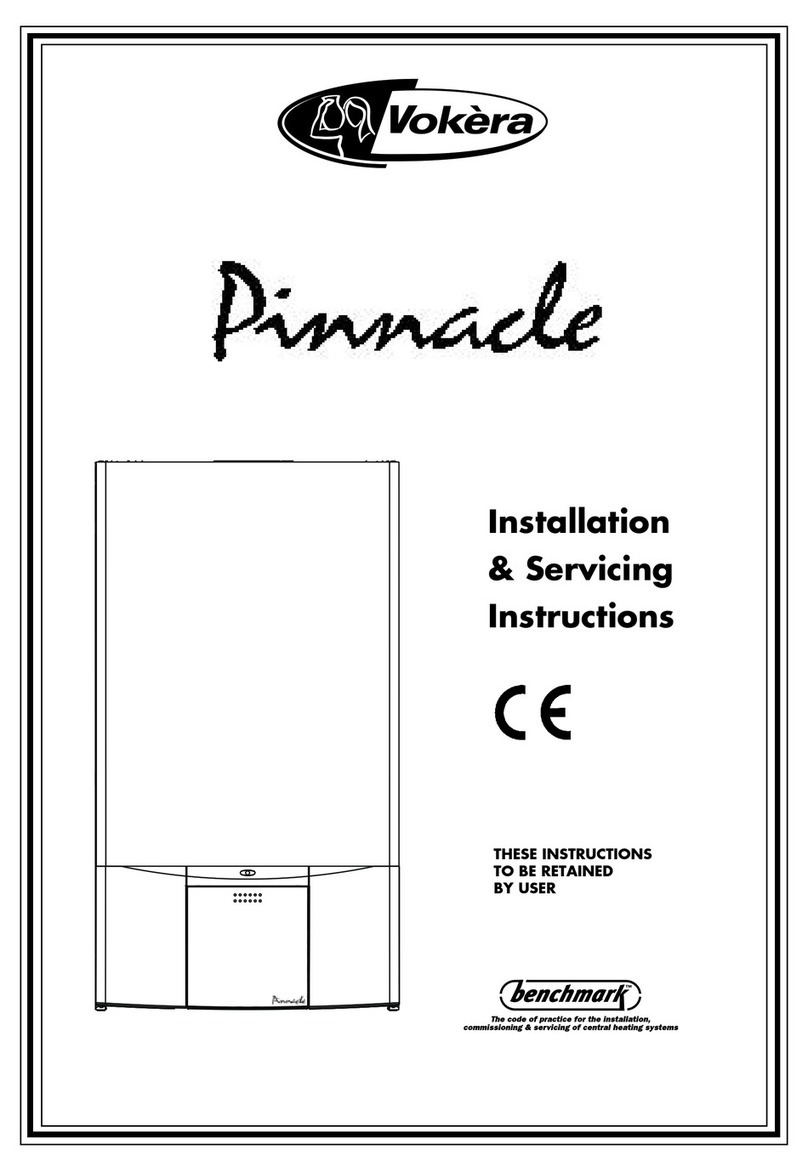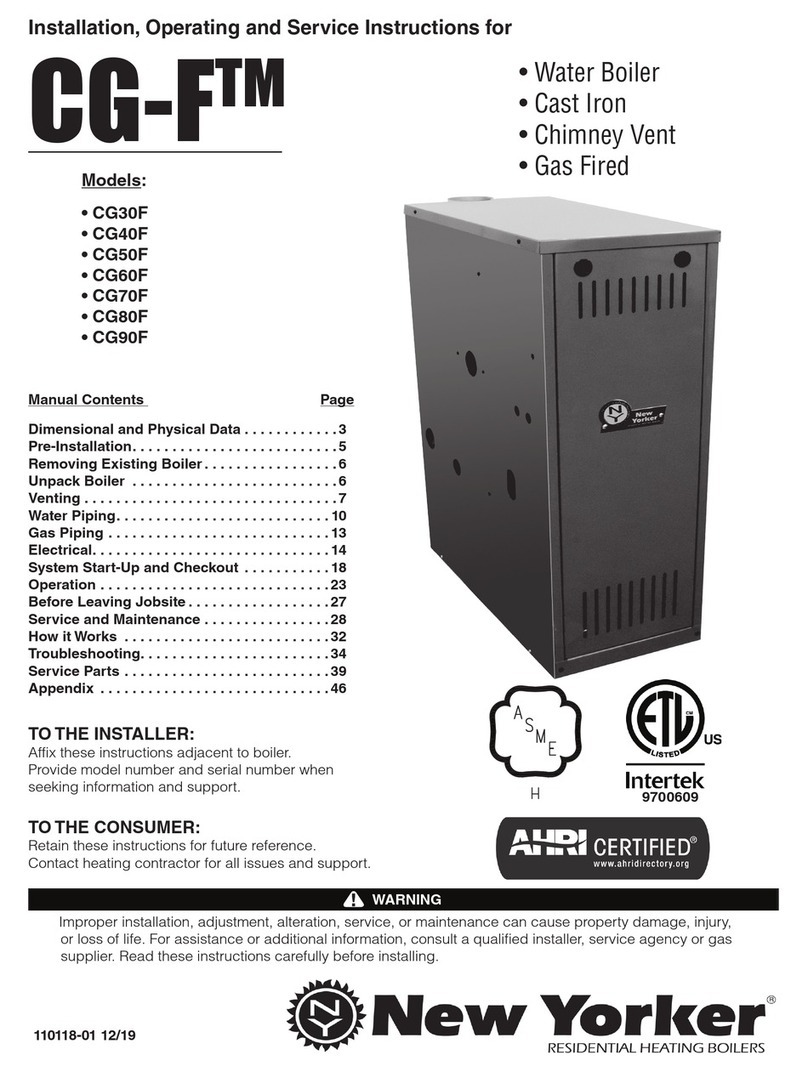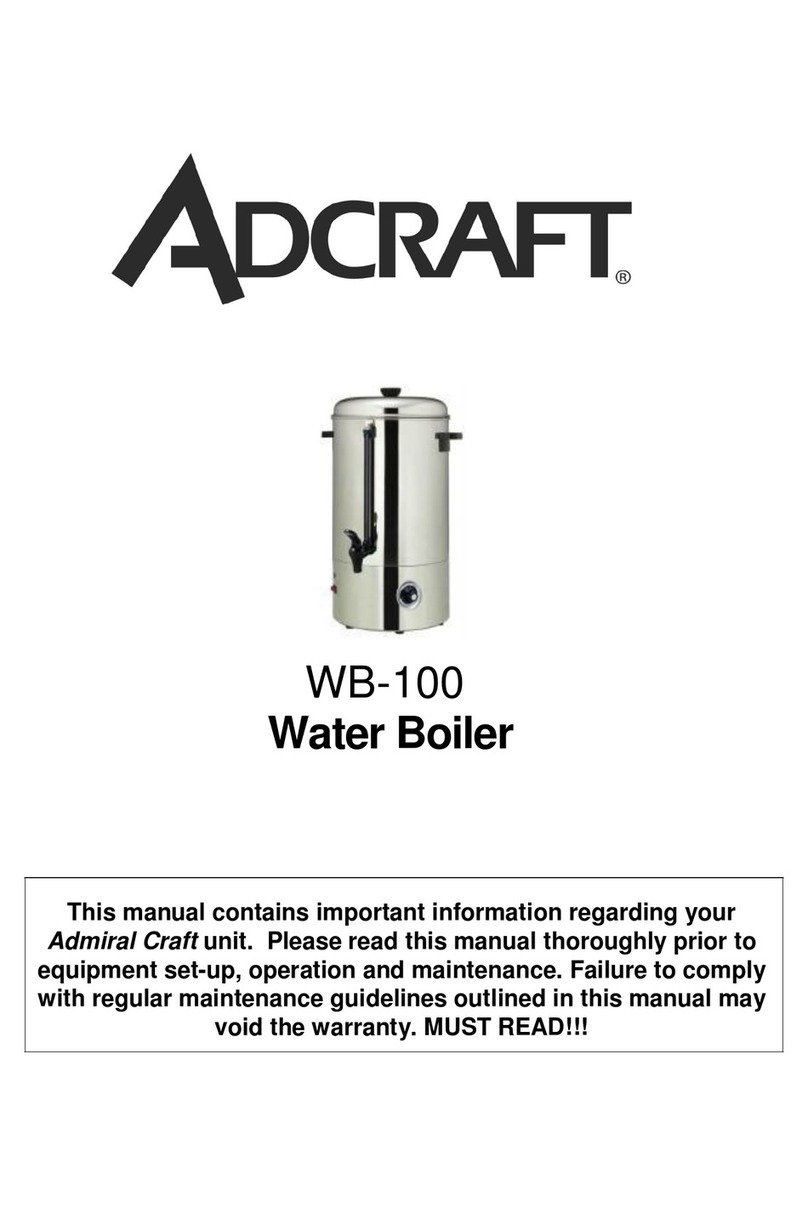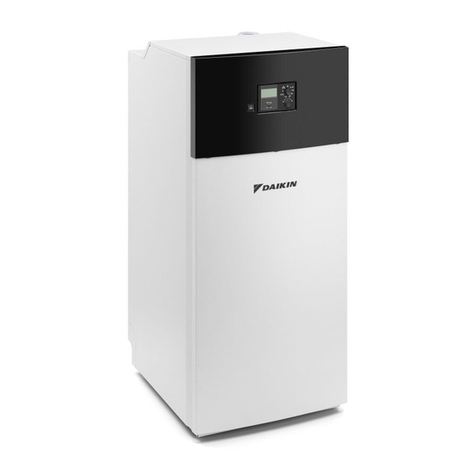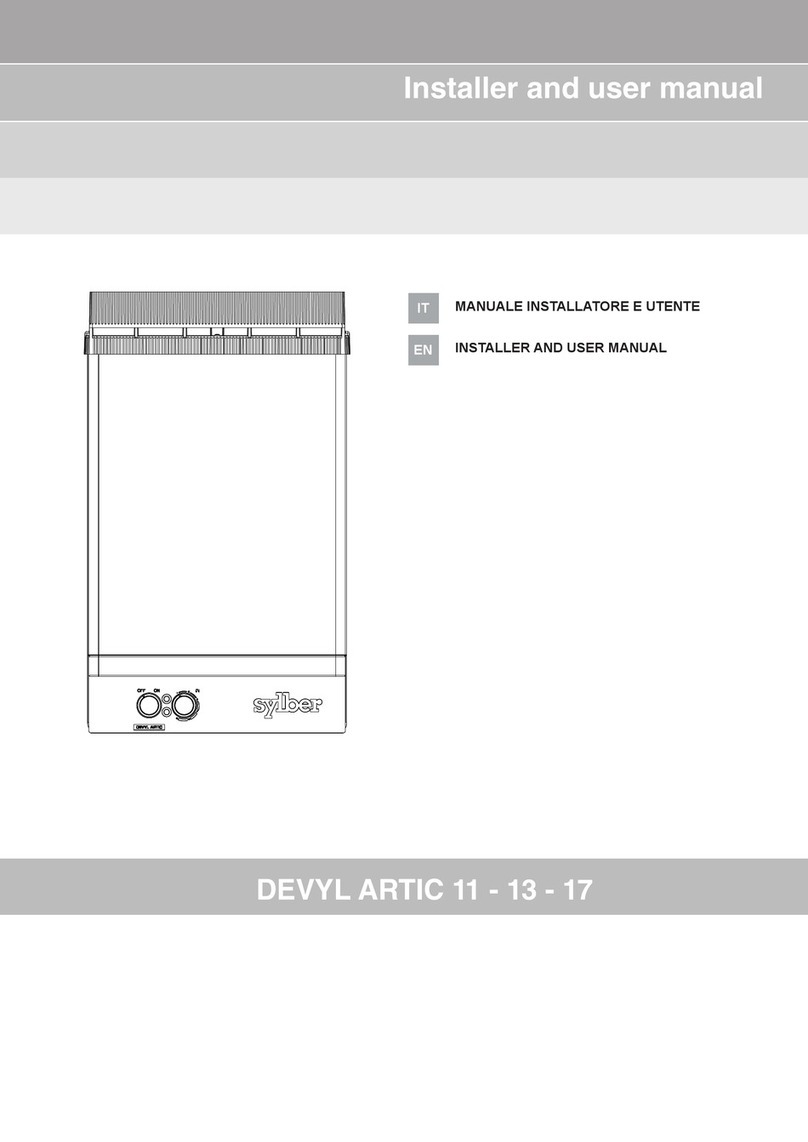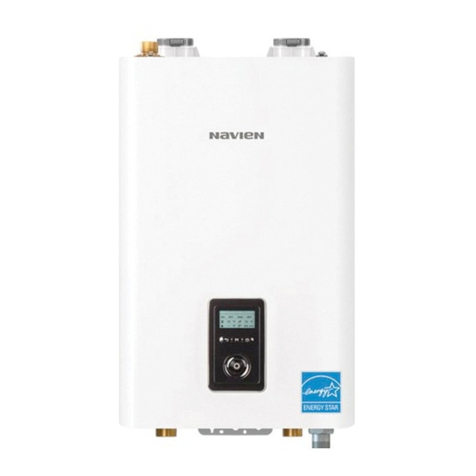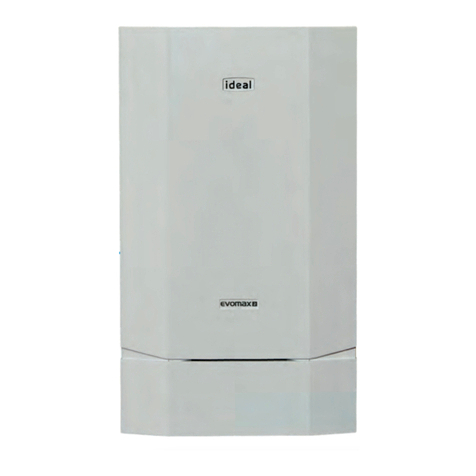
16
6. Boiler is now ready to be put into service.
IMPORTANT
IF, DURING NORMAL OPERATION, IT IS
NECESSARY TO ADD MORE WATER PER
MONTH THAN INDICATED BELOW, CONSULT
A QUALIFIED SERVICE TECHNICIAN TO
CHECK YOUR SYSTEM FOR LEAKS.
EXCESSIVE WATER ADDITION:
(Gal/Month)
CLS-3: 5 CLS-4: 7 CLS-5: 8½
CLS-6: 10 CLS-7: 12 CLS-8: 13½
A leaky system will increase the volume of make-up
water supplied to the boiler which can signicantly
shorten the life of the boiler. Entrained in make-up
water are dissolved minerals and oxygen. When the
fresh, cool make-up water is heated in the boiler the
minerals fall out as sediment and the oxygen escapes
as a gas. Both can result in reduced boiler life. The
accumulation of sediment can eventually isolate
the water from contacting the cast iron. When this
happens the cast iron in that area gets extremely
hot and eventually cracks. The presence of free
oxygen in the boiler creates a corrosive atmosphere
which, if the concentration becomes high enough,
can corrode the cast iron through from the inside.
Since neither of these failure types are the result of a
casting defect the warranty does not apply. Clearly it
is in everyone’s best interest to prevent this type of
failure. The maintenance of system integrity is the
best method to achieve this.
O. HINTS ON COMBUSTION
1. NOZZLES — Although the nozzle is a relatively
inexpensive device, its function is critical to the
successful operation of the oil burner. The selection
of the nozzle supplied with the CLS boiler is the
result of extensive testing to obtain the best ame
shape and efcient combustion. Other brands of the
same spray angle and spray pattern may be used but
may not perform at the expected level of CO2and
smoke. Nozzles are delicate and should be protected
from dirt and abuse. Nozzles are mass-produced
and can vary from sample to sample. For all of
those reasons a spare nozzle is a desirable item for a
serviceman to have.
2. FLAME SHAPE — Looking into the combustion
chamber through the observation door, the ame
should appear straight with no sparklers rolling up
toward the crown of the chamber. If the ame drags
to the right or left, sends sparklers upward or makes
wet spots on the target wall, the nozzle should be
replaced. If the condition persists look for fuel leaks,
air leaks, water or dirt in the fuel as described in
following steps.
3. FUEL LEAKS — Any fuel leak between the
pump and the nozzle will be detrimental to good
combustion results. Look for wet surfaces in the air
tube, under the ignitor, and around the air inlet. Any
such leaks should be repaired as they may cause
erratic burning of the fuel and in the extreme case
may become a re hazard.
4. AIR LEAKS — Any such leaks should be repaired,
as they may cause erratic burning of the fuel and in
extreme cases may become a re hazard.
5. GASKET LEAKS — If 11.5 to 12.5% CO2with a
#1 smoke cannot be obtained in the breeching, look
for air leaks around the burner mounting gasket,
observation door, and canopy gasket. Such air leaks
will cause a lower CO2reading in the breeching. The
smaller the ring rate the greater effect an air leak
can have on CO2readings.
6. DIRT — A fuel lter is a good investment.
Accidental accumulation of dirt in the fuel system
can clog the nozzle or nozzle strainer and produce a
poor spray pattern from the nozzle. The smaller the
ring rate, the smaller the slots become in the nozzle
and the more prone to plugging it becomes with the
same amount of dirt.
7. WATER — Water in the fuel in large amounts will
stall the fuel pump. Water in the fuel in smaller
amounts will cause excessive wear on the pump,
but more importantly water doesn’t burn. It chills
the ame and causes smoke and unburned fuel to
pass out of the combustion chamber and clog the
ueways of the boiler.
8. COLD OIL — If the oil temperature approaching
the fuel pump is 40°F or lower poor combustion or
delayed ignition may result. Cold oil is harder to
atomize at the nozzle. Thus, the spray droplets get
larger and the ame shape gets longer. An outside
fuel tank that is above grade or has fuel lines in a
IMPORTANT
SUCTION LINE LEAKS - WHATEVER IT TAKES,
THE OIL MUST BE FREE OF AIR. This can be
a tough problem, but it must be resolved. Try
bleeding the pump through a clear tube. There
must be no froth visible. There are various test
kits available to enable you to look at the oil
through clear tubing adapted to the supply line at
the pump tting. Air eliminators are on the market
that have potential. Also, electronic sight glasses
are being used with good success. At times, new
tubing must be run to the tank or new ttings put
on. Just make sure you get the air out before you
leave.
Any air leaks in the fuel line will cause an unstable
ame and may cause delayed ignition noises. Use
only are ttings in the fuel lines.





















